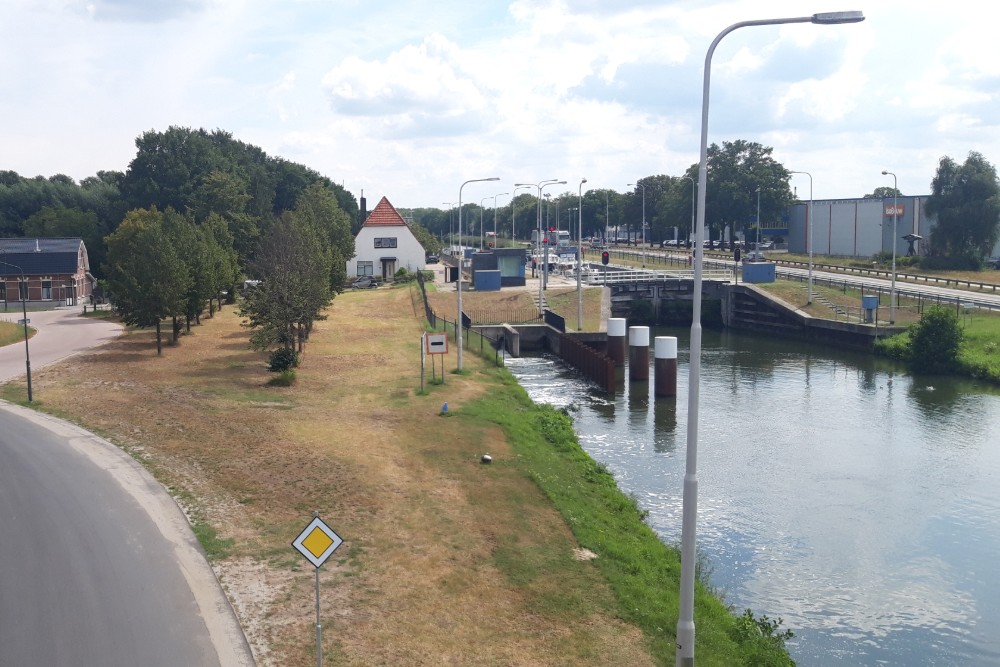Jackson, Robert Stennett
- Date of death:
- April 4th, 1945
- Buried on:
- Hanover Commonwealth War Cemetery
Plot: 15. Row: E. Grave: 12. - Service number:
- 180282
- Nationality:
- British
Biography
29 March, 1941: 2nd Lieutenant The King's Shropshire Light Infantry
Do you have more information about this person? Inform us!
- Period:
- Second World War (1939-1945)
- Rank:
- Lieutenant
- Unit:
- Headquarters, 159th Infantry Brigade, 11th Armoured Division, British Army
- Awarded on:
- March 1st, 1945
- Awarded for:
- Operation Market Garden
Lt Jackson, one of the IO's of Bde HQ, was detailed to assist the Br. Control Offr; he took up his station close to the bridging site at approximately 1900 hrs.
Zero hour for the assault crossing by two rifle coys of 1 HEREFORD was 1930 hrs. By 2100 hrs three rifle coys had successfully crossed and were establishing themselves on the far bank. The enemy, who had been holding def posns close to the far bank, subjected the bridge area to very heavy mortar and shell fire, and counter-attacked the coys who had effected the crossing. This counter-attack was so quick and conducted with such determination that it gained a temporary success.
Lt. Jackson, appreciating this critical posn himself personally collected stragglers in the bridge area and led them across the narrow lock gate to the far bank. He there handed them over and returned to make a report to Bde Hq from the Bridge Control Centre. By this time the enemy had succeeded in infiltrating snipers close to the bridging site, and with small arms and mortar fire forced the Engineers and the remainder of the Bridge Control party to temporarily withdraw.
Undaunted, after making his report, Lt. Jackson, although the Bridge Control party had withdrawn, collected further stragglers in the bridge area and led them, on his own initiative, across the Canal. He organised the local defense of the immediate bridgehead, and then gathering a small party of fifteen men who had lost their way in the darkness he advanced to the perimeter of the bridgehead. After making contact, he personally led his small force outwards from the perimeter astride the maine road to ASTEN in order to clear this area of enemy and secure a small culvert some 400 yards from the bridgehead. Despite the stiff enemy opposition and the fact that his party had been reduced to some half a dozen men - two had been killed by Germans in hand-to-hand fighting - he reached the culvert and positioned the remnants of his force. The enemy were approximately 30 yards away at this time. Making use of the little cover afforded by the ground, Lt Jackson with his rifle and grenades personally dominated the battlefield; he accounted for a number of enemy dead and wounded.
Realising that his small party was too meagre a force with which to attack a vastly superior enemy force, he concentrated for the remaining hours of darkness on harrassing the enemy at close quarters, and beating off any enemy attempts to counter-attack.
It was not until 0730 hours that our tanks crossed the bridge. Lt. Jackson remained in his exposed position until the ground was securely held. In his advanced position he was able to assist the attacking tanks by killing a large number of Germans who tried to attack the tanks with sticky grenades and phostphorus bombs.
There is no doubt that the success of this operation, which enabled the building of a class 40 bridge, was largely due to the individual bravery of Lt. Jackson. It was by his outstanding leadership and courage in a place where he had no duty to be, that the bridgehead was retained against what were subsequently discovered to be considerably superior enemy forces."
drawn up 2 October 1944
Originally recommended for a MC but upgraded to a DSO.




